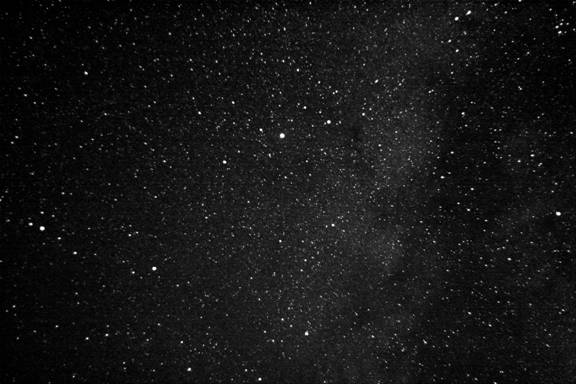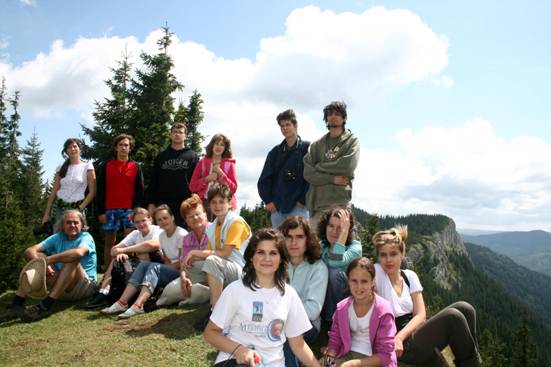International Astronomy Camp at Vladeasa
Despite the not quite favorable weather conditions, the First International Astronomy Camp at Vlădeasa, organised by the Meridian Zero Astroclub, was a success.
On Monday, the thick layer of clouds and the strong wind made astronomical observations impossible. Tuesday night, the strips of clear sky between clouds made the observation of some deep-sky objects, variable stars, and Jupiter possible. On Wednesday, the sky was clear for some hours, thus some of the participants counted 65 meteors around the Perseid maximum. Thursday night, the limiting magnitude reached the value of 7. Through the 20 cm Dobsonian, M27 was a spectacular view, in M31 you could see the spiral arms, and the Veil Nebula showed complex structures, especially when using an OIII filter.

Constellation Aquila (Barnard’s E, a dark nebula, is visible to the right of Altair)
Besides nocturnal observations, the participants took part in different activities. Every afternoon, after dinner, they had the possibility to follow presentations from various domains of astronomy: variable stars (Csukás Mátyás), the history of Dobson telescopes (Mizser Attila), potentially hazzardous asteroids (Sárneczky Krisztián), the Sun’s magnetohydrodynamics (Anabele Pardi), and deep-sky objects (Tibi Vesselényi).
During daytime, we have visited Vlădeasa Peak (1836 meters), the White Stones, and we’ve played card games, and a variety of musical instruments.

Group photo at the White Stones
The only source of light pollution was Huedin to the east. In the other directions, the sky was free of any sign of light pollution.
 Panorama of the observations’ field (fireball on the right of the image) Panorama of the observations’ field (fireball on the right of the image)
The sky has shown its true potential only after the camp had ended, when the cloud layer covering East Europe has left the area, and the Moon wasn’t a disturbing factor anymore.
 
14 minutes exposure, Canon 400D
Except the tough road conditions of the last few kilometers, the location has all the parameters necessary for an astronomy camp. In the future, we will try to choose a more optimal period for the camp.
I would like to thank the presenters, Csukás Mátyás for the translation, Mizser Attila and MCSE (Hungarian Astronomical Association) for their support, and the leaders of our club: Pazmany Nicoleta and Hofer Gratian, their contribution being essential for the organization event.
Tibor Vesselényi
|